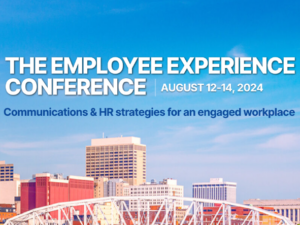What’s on Corporate America’s Labor Day menu? Plenty of burnout
Right now, the onus is on companies to support exhausted, worn-out workers in substantive ways. Here’s how comms pros can help.

Labor Day is almost here, a time when we recognize and celebrate the achievements of the American workforce with barbecues and parades.
On the heels of a recent study showing that employees in nearly every industry are at the point of frustration and burnout, you can bet there will be plenty of complaining on the Labor Day cookout menu, along with hamburgers and beer.
In the last 18 months, employees have navigated a challenging environment, and they are tired. We’ve gone from a pandemic-induced recession, to a growth period, to what now looks like pandemic with growth at the same time. It’s no wonder employees are burned out.
According to a study by Energage, the company behind the Top Workplaces Awards, companies are facing a PR and marketing challenge as waning employee engagement can have a negative impact on all stakeholders, including customers and prospective new hires.
The good news is that communicators can play an important role in partnering with colleagues in HR to help reverse some of these trends, while leveraging communications skills to strengthen their organization’s brand reputation and spur employee referrals and new hire interest.
How bad is it?
The Energage research underscores a meaningful shift in the employee experience in contrast to the early pandemic time period. Survey data collected from employees at more than 4,000 companies show that employee engagement sharply increased in April 2020 as companies scrambled to ensure employees that they were prioritizing employee’s health and well-being during the pandemic with initiatives such as work-from-home flexibility. However, after this initial spike, engagement has plummeted.
In the recent survey, employees reported feeling increasingly uninformed about what’s going on in the company, and that leaders are less visible. At the same time, employees feel that the “all hands on deck” mission that defined the early pandemic and created such strong engagement has dissipated, replaced perhaps by growth and hiring concerns.
As a result, signs are pointing toward a “Great Resignation,” as employee dissatisfaction causes them to leave for other opportunities. This couldn’t come at a worse time, as many industries are struggling to find employees to fill current openings, and customer service has been hit hard. What’s more, employee dissatisfaction often spills over and negatively affects customer relationships.
How communicators can help
It’s clear that HR colleagues have their hands full. Fortunately, messaging maestros can help. Teaming up with HR counterparts, comms pros can apply their creativity to assist in the effort to get employee engagement back on track, mining corporate culture for opportunities to tell positive stories to employees, customers and prospective new hires through initiatives including employee advocacy, PR, marketing and advertising.
The first step in this effort is to understand employee sentiment and uncover meaningful storylines that can be used strategically to communicate with audiences. As communication experts, you know the importance of having your ear to the ground to understand your audiences. This same approach applies here.
During the beginning of the pandemic, companies instinctively did this. Leaders were employee-centric in their actions and decisions. They were on top of things that mattered, and they were willing to ask a lot of questions. As time went on and the focus changed, employee engagement suffered.
Comms pros can partner with HR to leverage employee survey programs already underway at the company, or educate HR on the need for these feedback programs and their extended ROI for strategic marketing and PR initiatives.
Leverage culture to tell your story
The intelligence learned through these studies can be tapped to fuel strategic communications efforts targeted to employees, customers, prospective hires and others, working with HR and employee relations counterparts to identify storylines focusing on the culture that makes the company unique.
Internally, employee communications leaders would start by reflecting on how they communicated to employees during the early pandemic days, and then replicate it. Given the survey results, the communication taking place early in the pandemic is likely something much better (and more personalized) than what’s happening now.
Externally, marketing and PR can embark on strategic efforts to target customers, prospective new hires and other stakeholders with storytelling that moves the needle for company brand-building and hiring goals.
Panda Restaurant Group is one company that has done this very well. Unlike some restaurants, the majority of Panda locations remained open during the pandemic with enhanced health and safety protocols and contactless operations. Panda teams worked hard to evolve the restaurant experience and focus on the health and safety of guests and associates.
At the same time, Panda leadership doubled down on its culture of promoting a family environment for both employees and guests, including investing more than $30 million in enhanced benefits during the pandemic.
Panda used the accolades it received from employee surveys and outside groups and communicated them to guests and prospective hires, building goodwill and customer stickiness.
As company culture becomes a differentiator, think about how you can include it in every communication, on all channels, and with every influencer. Culture can add richness and purpose to advertising, social media, recruiting, analyst and shareholder relations, community outreach, philanthropy, and media relations.
In the early days of the pandemic, employees saw a different version of communication and information sharing. During this time of great unknowns, confusion and fear, companies answered the call by increasing the quality and quantity of their communication.
The message from employees is clear: Companies must get back to this approach.
Greg Barnett is chief people scientist at Energage, the company that powers Top Workplaces.






